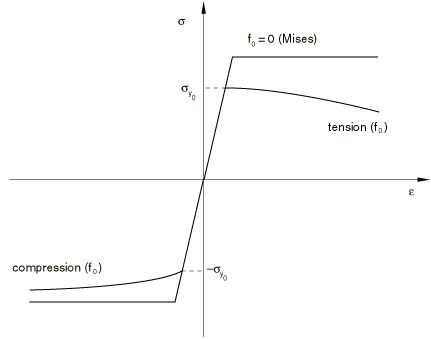Yield condition
For a metal containing a dilute concentration of voids, based on a rigid-plastic upper bound solution for spherically symmetric deformations of a single spherical void, Gurson (1977) proposed a yield condition of the form
where
is the deviatoric part of the macroscopic Cauchy stress tensor ;
is the Mises stress;
is the hydrostatic pressure; f is the volume fraction of the voids in the material; and is the yield stress of the fully dense matrix material as a function of , the equivalent plastic strain in the matrix. Tvergaard (1981) introduced the constants , , and (as coefficients of the void volume fraction and pressure terms) to make the predictions of the Gurson model agree with numerical studies of “ordered” voided materials in plane strain tensile fields; one can recover the original Gurson model by setting .
It should be noted that implies that the material is fully dense, and the Gurson yield condition reduces to that of von Mises; implies that the material is fully voided and has no stress carrying capacity. This is illustrated in Figure 1, where the yield surfaces for different levels of porosity are shown in the p–q plane.

Figure 2 compares the behavior of a porous metal (which has an initial void volume fraction of ) in tension and compression against the perfectly plastic matrix material; the initial yield stress of the porous metal is .

In compression the porous material “hardens” due to closing of the voids, and in tension it “softens” due to growth and nucleation of the voids.

